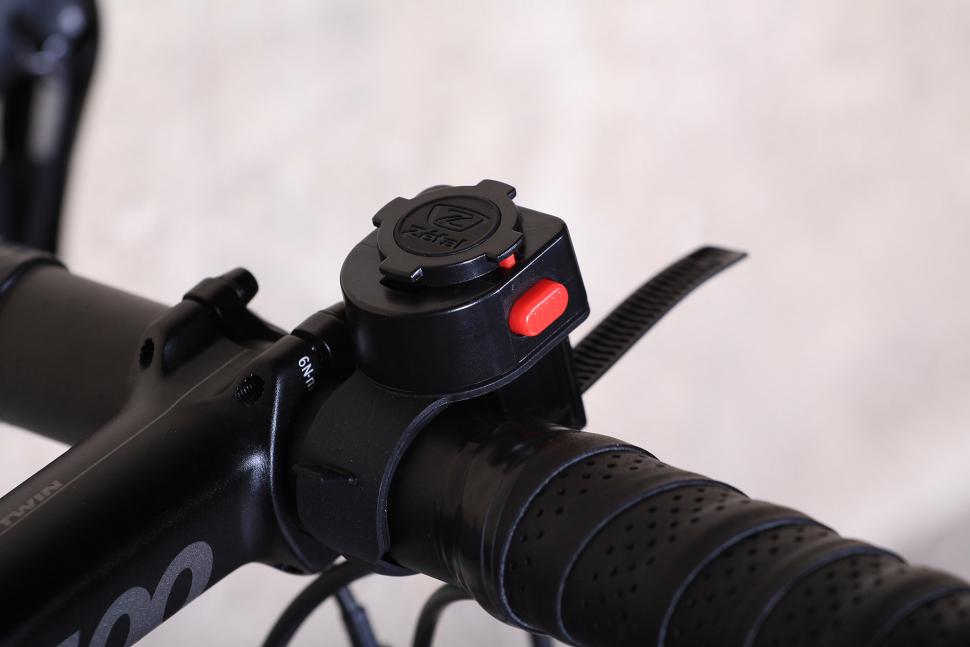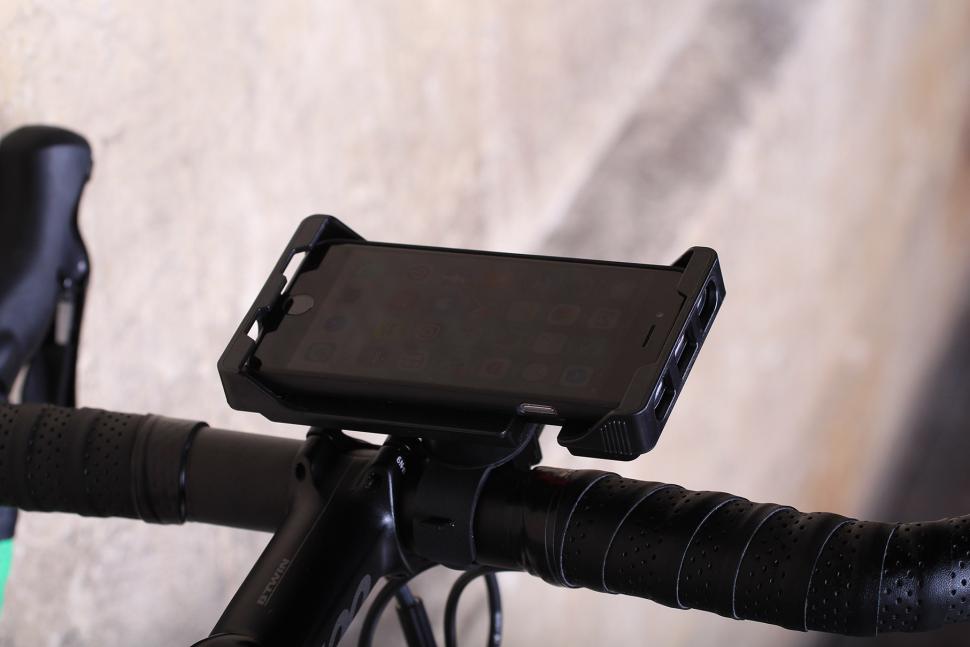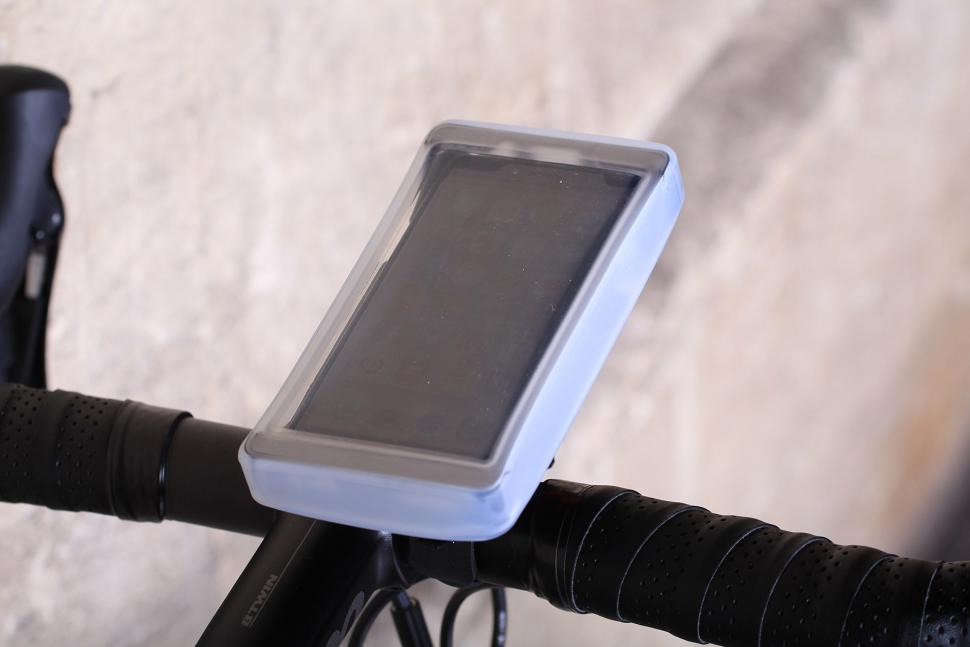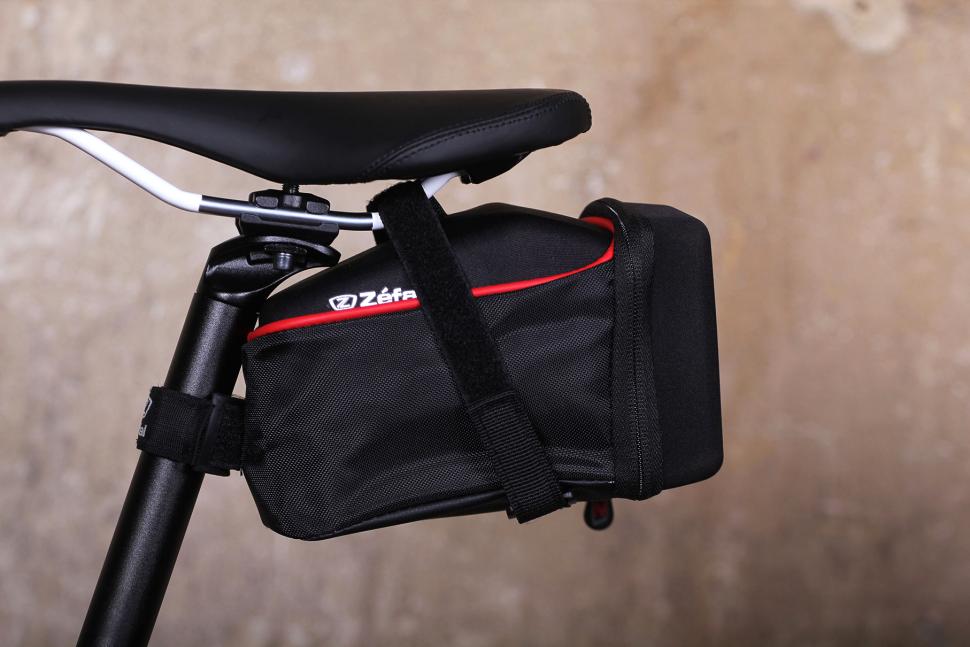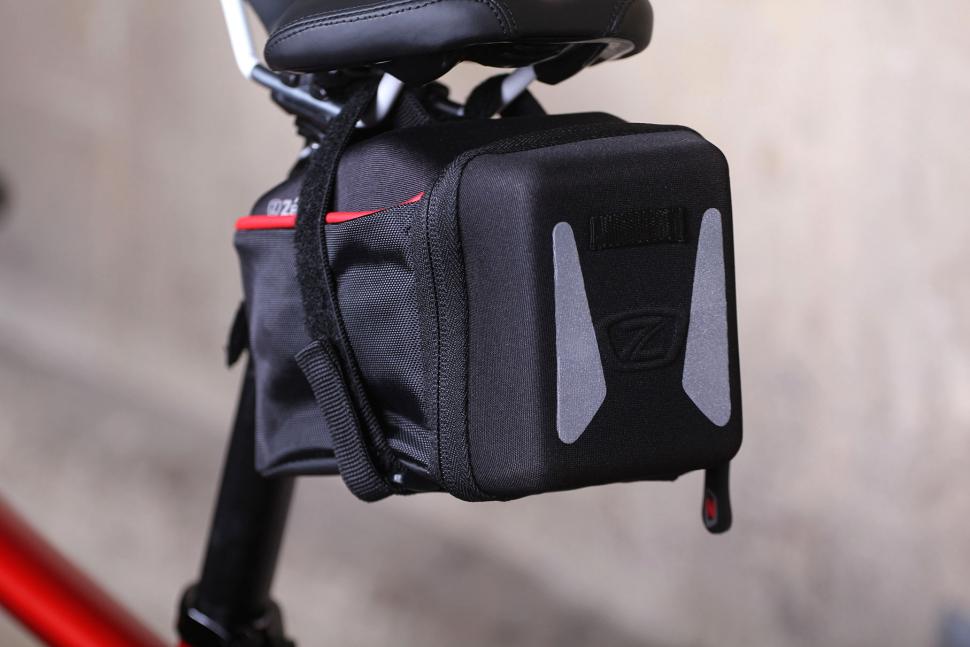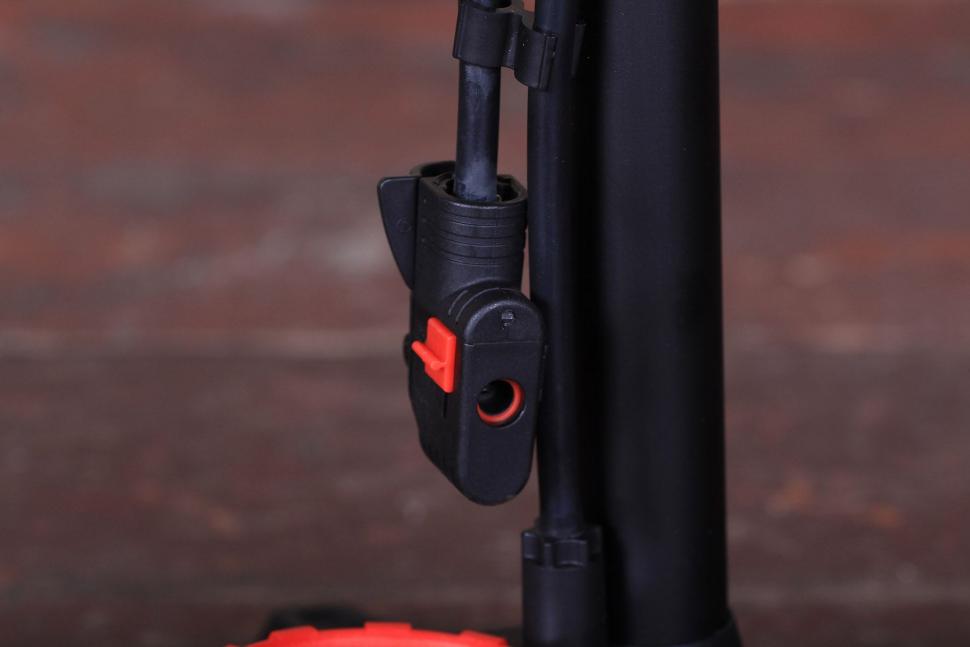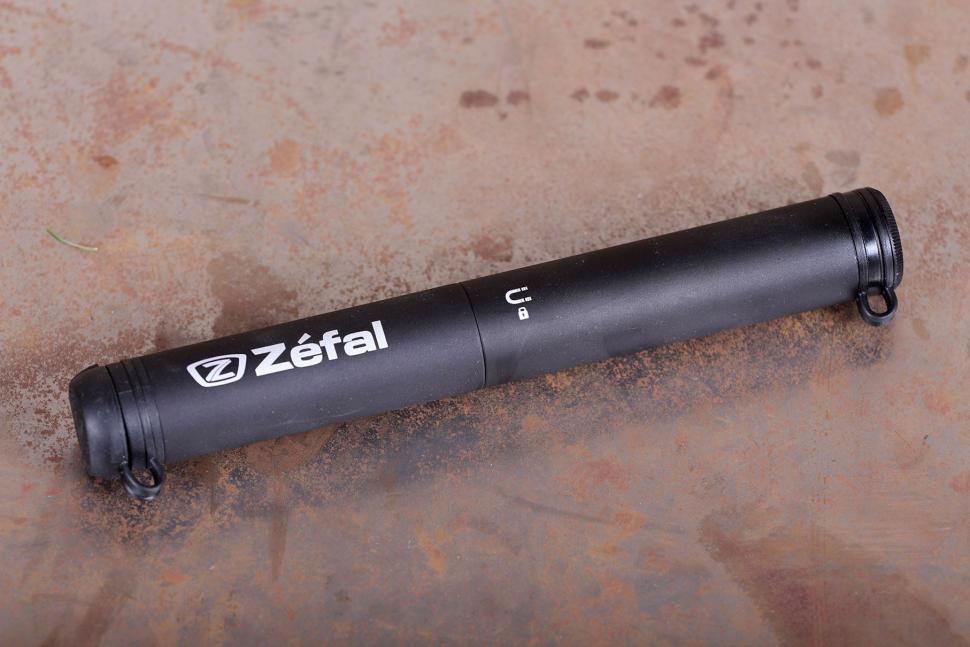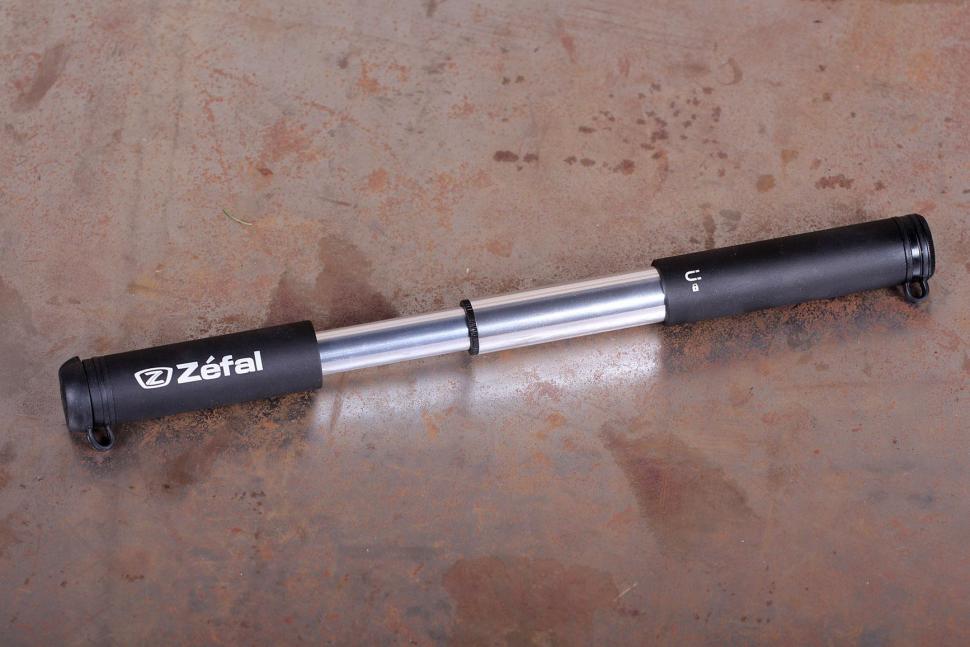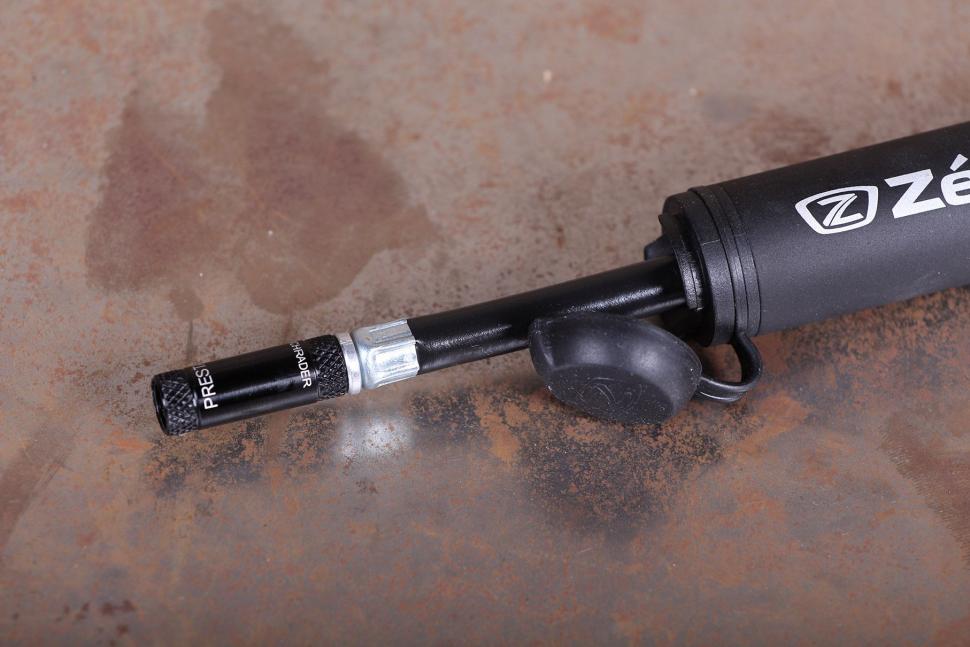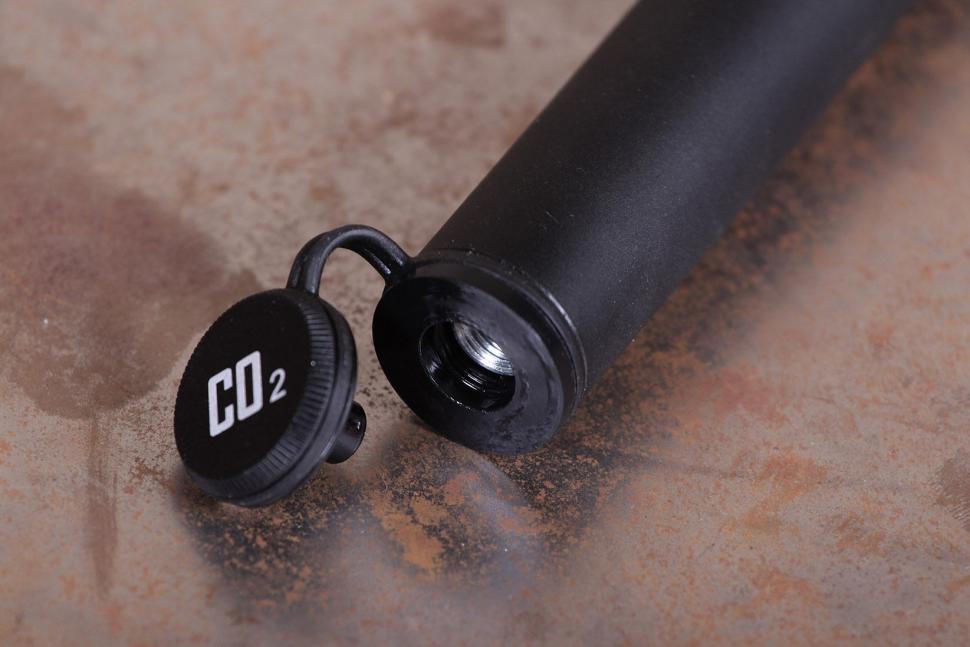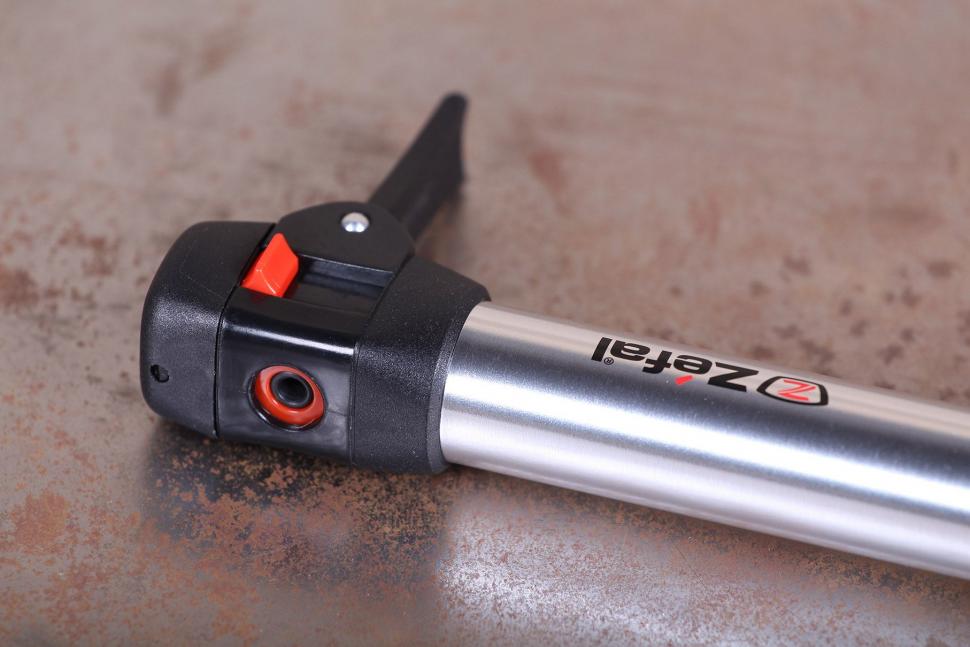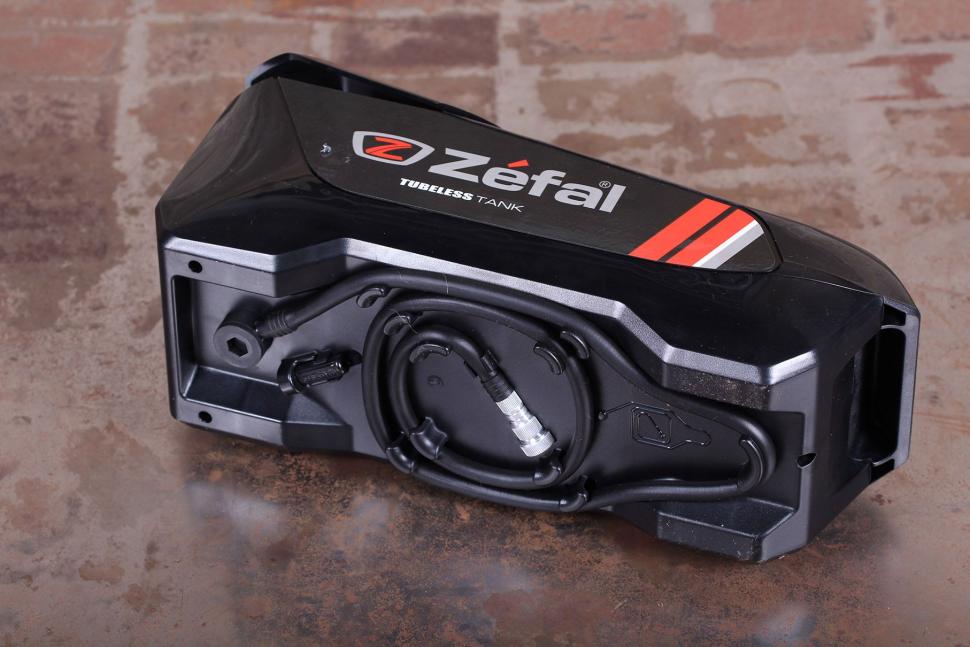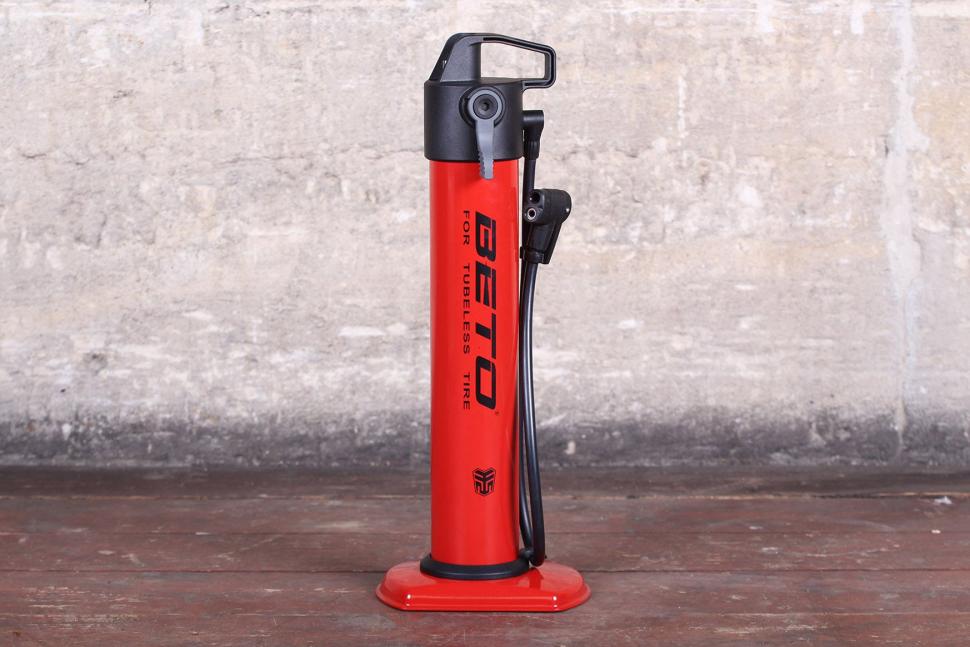The pneumatic tyre is one of mankind's greatest inventions, smoothing the ride and making bikes faster compared to the solid tyres that came before it. But it's also a pain in the neck, because it's vulnerable to punctures and gradually loses air while your bike is stored. At home and on the road, you need a a way to replace the lost air.
There are three broad tyres of tyre inflator: portable hand pumps that you take along on your rides; portable carbon dioxide canister devices; and floor pumps for workshop and trackside use. Hand pumps in turn divide into full-size frame pumps and minipumps that are small enough to fit in your jersey pocket. Let's take a look at all the options and variations.
Floor pumps
Also known as track pumps because they're the most common way to get the very high pressures used in track cycling, floor pumps make it easy to get air into your tyres. A floor pump has a handle to help you get your weight behind the job, feet that are big enough to stand on to hold it in place, and a gauge so you can get the pressure spot on.
The narrower the barrel of a floor pump, the easier it is to get high pressures, but it will take more strokes.
All track pumps have some sort of chuck to attach to the valve, but there are many different designs. Some use a universal mechanism that will fit Presta and Schrader valves, while others have a separate attachment for each type. Almost all have a lever to clamp the chuck round the valve.
There's some debate about where the pressure gauge should be. Some manufacturers put it at the top of the barrel, which makes it easier to read, others put it at the bottom because it's less likely to get damaged there if the pump falls over. If you go for pump with a high gauge, make sure it has some sort of protection against falls.
Some pumps are definitely more robust than others, which is why you'll see a fairly small selection of models being used in bike shop workshops. Very few can stand being accidentally kicked around, an inevitable part of workshop life for a floor pump.
Birzman's Maha Push and Twist II Floor pump is a really high quality unit, and the new head is simple to use and effective for both Presta and Schrader valves. It's expensive, but a very nice thing and definitely worth a look if you're after a good-looking pump with performance to match.
Read our review of the Birzman Maha Push and Twist II
Find a Birzman dealer
The Beto CJA-001S Tubeless Air Tank Inflator is a workshop-quality tubeless air tank with well-thought-out features and excellent performance. It should last you a lifetime of tubeless setup, road or mountain.
Read our review of the Beto CJA-001S
Find a Beto dealer
Most cyclists have a couple of pumps: a mini pump for road-side rescue and a track pump for home inflation. The cycling industry is nothing if not adept at creating niches, however, and the travelling track pump might be just such a niche - for when you're on a biking holiday or just need to cram a lot of stuff in a small car for an event. Cannondale's Airport Carry On floor pump is just such a pump, with a capacity equal to many a full-sized track pump and a clever folding design to make it more packable.
Read our review of the Cannondale Airport
Find a Cannondale dealer
Thanks to its clever Flip-Thread chuck the Lezyne Alloy Floor Drive works with every type of valve and valve extender we've tried and without any of that fuss of wiggling the connector or refitting to get it started. Quite frankly it's brilliant.
The Lezyne Alloy Floor Drive is robust and well built with the barrel and base being CNC machined from aluminium. With the base measuring 220mm in width it's stable in use thanks especially to the large diameter pressure gauge bezel creating a kind of tripod effect.
Find a Lezyne dealer
Read our review of the Lezyne Alloy Floor Drive pump
There's nothing terribly fancy about the Rennkompressor, though the latest version has a choice of chucks. What sets it apart and makes it a very common shop choice, is the durability that comes from its beefy cast aluminium base, fold-out steel feet, steel barrel and wooden handle. If you want a track pump you can leave in your will, this is the one to buy.
Find an SKS dealer
You don't have to spend the thick end of fifty quid to get a decent floor pump. Topeak's Joe Blow Sport III is deservedly popular for its sturdy construction, double-sided chuck and comfy elastomer-covered handle.
Topeak has put the gauge halfway up the barrel so it's easy to see but not so high that a trivial topple will smash it. Good thinking.
Read our review of the Joe Blow Sport III
Find a Topeak dealer
If you've got a track pump, and you're meticulous about your tyre pressures, a standalone pressure gauge is a good investment, giving greater precision and consistency than the typical gauge that's built in to a pump.
The SKS Airchecker is a well-made digital gauge for tyre pressures that's quick to use once you have the knack of getting it firmly seated on the valve. SKS is well known for its mudguards. The Airchecker is a solid digital pressure gauge that comes with the same rugged build quality and carries a five-year warranty.
Operation is mostly self-evident: press the On/BAR/PSI button to wake the gadget up and toggle between scales. The Mode button allows you to change from the default 'snapshot' pressure reading to a real-time gauge that you'll need when you want to let some air out. That's achieved by pressing the little orange 'deflate' button on the valve head.
Read our review of the SKS Airchecker
Mini pumps
A scaled down version of a frame pump, a mini-pump is small enough to fit in a bag or pocket, or clips into a mount that fits under a bottle cage. Mini-pumps are popular because they're light and tidy. They don't get a tyre up to pressure very quickly, but their fans see this as worth putting up with given how rarely they need them.
Mini pumps vary widely in how well they work. Some just won't get your tyres up to recommended pressure, so you'll have to ride carefully after using one to avoid a pinch flat, but there are a few gems out there that work almost as well as frame pumps.
At 297mm, the L-for-Long version of this mini-pump isn't terribly mini, but it works well. It comes with its own bracket and it's very shiny and beautifully made with some well thought out little details. Both ends of the CNC-ed aluminium pump are protected by rubber caps to stop road gunk getting inside and the connecting hose screws securely inside the handle.
For pocket-stowage, try the 216mm-long M version
Read our review of the Lezyne Road Drive Alloy
Find a Lezyne dealer
Frame pumps
Your classic frame pump is intended to fit along the seat tube, between the top tube and down tube. Problem is, almost all bikes have two water bottles these days and one of them is on the seat tube. That means you may need to get imaginative to carry a frame pump, fitting it along the top tube, perhaps with the help of straps or a clamp-on pump peg.
The length of a frame pump means it's a fairly quick way to inflate a tyre out on the road, and it doesn't cost you the price of a carbon dioxide cartridge every time. Some riders feel a frame pump spoils the look of their bikes though.
Frame pumps usually come set up for Presta valves, but can be switched to Schrader by swapping round some parts in the chuck.
Topeak's Road Master Blaster is a well-thought-out frame pump that's a reliable companion for longer excursions. Well built and capable of high pressures, it's a great touring or Audax pump.
The Aluminium-barrelled, plastic-ended Master Blaster has a sprung handle and comes with a strap to keep it snugly attached to your bike; there's four sizes to fit pretty much any frame. Once removed you can lock the handle and pump either Presta or Schraeder tubes (via interchangeable internals) to a claimed 160psi. As usual this is a wildly optimistic maximum, but I stuffed 100psi into a 700x23c tyre in just over 100 strokes without any problems at all.
Read our review of the Topeak Road Master Blaster
Find a Topeak dealer
Legendary US bike shop Rivendell Cycles calls the HPX "the biggest commercial mainstream normal zero-snobbeury bicycle success that has ever come out of France" and we can't argue with that. The narrow barrel makes high pressures easy, the thumblock grabs the valve firmly and the switchable sprung handle means no wasted effort.
The design's been around since the early 1970s. HPXes are tough and durable enough that we wouldn't be surprised if there are still a few of the first batch in use.
Find a Zefal dealer
Carbon dioxide inflators
With the work done by a small bottle of compressed gas, carbon dioxide (CO2) inflators are the fastest way of getting back on the road. They're perfect for sportives or fast training rides where you don't want to be holding up the rest of the group.
As a gas expands it cools, so look out for CO2 inflators that protect your fingers from the canister, either with a rubber cover for the canister or by enclosing it in a plastic shell.
Some inflators only pop open the canister when you use it, and don't allow you to use only part of the available gas, others have a trigger so you can use just part of the contents.
A 16g cartridge will get a 23mm tyre up to 90-100psi, which should be plenty to get you home. Threaded cartridges are usually slightly more expensive than unthreaded. Buy in bulk if you're relying on CO2 as your main way of fixing flats on the road.
The Bontrager Air Rush Road CO2 Pump is a nifty little dual design that won't leave you deflated on the roadside.
The problem with a mini pump is that they are slow, and also an unnecessary upper-body workout for the weedy cyclist. The problem with CO2 canisters is that they are a one hit wonder. Combine the two and you might just have the ultimate solution.
Read our review of the Bontrager Air Rush
Find a Bontrager dealer
The Genuine Innovations Proflate 16 may not look the smartest, but it's a very cleverly designed CO2 pump that instils trust and makes you feel in control. It uses 16g non threaded cartridges (which are slightly cheaper than their threaded equivalents) and works on both Schrader and Presta valves.
The Proflate 16 has a host of really well designed features: it auto-detects Schrader or Presta valve; it's got a little indicator that tells you if the cartridge is punctured and the pump is therefore charged; it's got a trigger, protected by a security catch; you can store cartridges upside down in the body avoiding the risk of accidental puncturing; you can't accidentally unscrew the body with a charged/punctured cartridge; and it's got an automatic dirt/water shield.
Read our review of the Genuine Innovations Proflate 16
Find a Genuine Innovations dealer
Lezyne's Control Drive CO2 Inflator makes it really easy to get any Presta or Schrader inner tube fully inflated. It provides easy control of the flow of gas and has a jacket to protect your hands from freezing to the canister during use.
The Control Drive is as simple as they come, is very nicely designed and works effectively. The dual head screws onto any standard threaded CO2 canister and provides Presta and Schrader compatibility. You simply push the Control Drive onto the valve, and turn the inflator head to release air.
Read our review of the Lezyne Control Drive
Find a Lezyne dealer
The Birzman Infinite Road + CO2 pump is a 2-in-1 pump and C02 inflator that's a good-looking efficient machine to get you back on the road in the minimum of time. You can either inflate your tyres manually, use a CO2 cartridge or if you're determined to get to 120psi, start with the hand-pump and top off with CO2.
Read our review of the Birzman Infinite
Find a Birzman dealer
The B'Twin CO2 Inflator & 16g Cartridge Set is probably the best-value inflator on the market. At £8, fitting 16 or 25g canisters with precisely-controllable one-handed inflation, it's a great buy.
With the head threaded most of the way onto the cartridge it's 12cm long, and easily slips into a pocket. Removed from the cartridge it's as small as these things get, so easily put into a tool roll.
It's hard to imagine a simpler process: screw on the canister fully, press onto valve, done. Pressing down on the valve will push it through the rim if you've removed the lockring from your valve stem, or are running unthreaded valves. Either way, applying pressure opposite onto the tyre to keep the valve in place is dead easy, and as the tube starts to inflate, the valve very quickly resumes its natural position and pushes back against the inflator head.
Read our review of the B’Twin CO2 Inflator and 16g Cartridge
Find a B’Twin dealer
About road.cc Buyer's Guides
The aim of road.cc buyer's guides is to give you the most, authoritative, objective and up-to-date buying advice. We continuously update and republish our guides, checking prices, availability and looking for the best deals.
Our guides include links to websites where you can buy the featured products. Like most sites we make a small amount of money if you buy something after clicking on one of those links. We want you to be happy with what you buy, so we only include a product in a if we think it's one of the best of its kind.
As far as possible that means recommending equipment that we have actually reviewed, but we also include products that are popular, highly-regarded benchmarks in their categories.
Here's some more information on how road.cc makes money.
You can also find further guides on our sister sites off.road.cc and ebiketips.
Road.cc buyer's guides are maintained and updated by John Stevenson. Email John with comments, corrections or queries.
